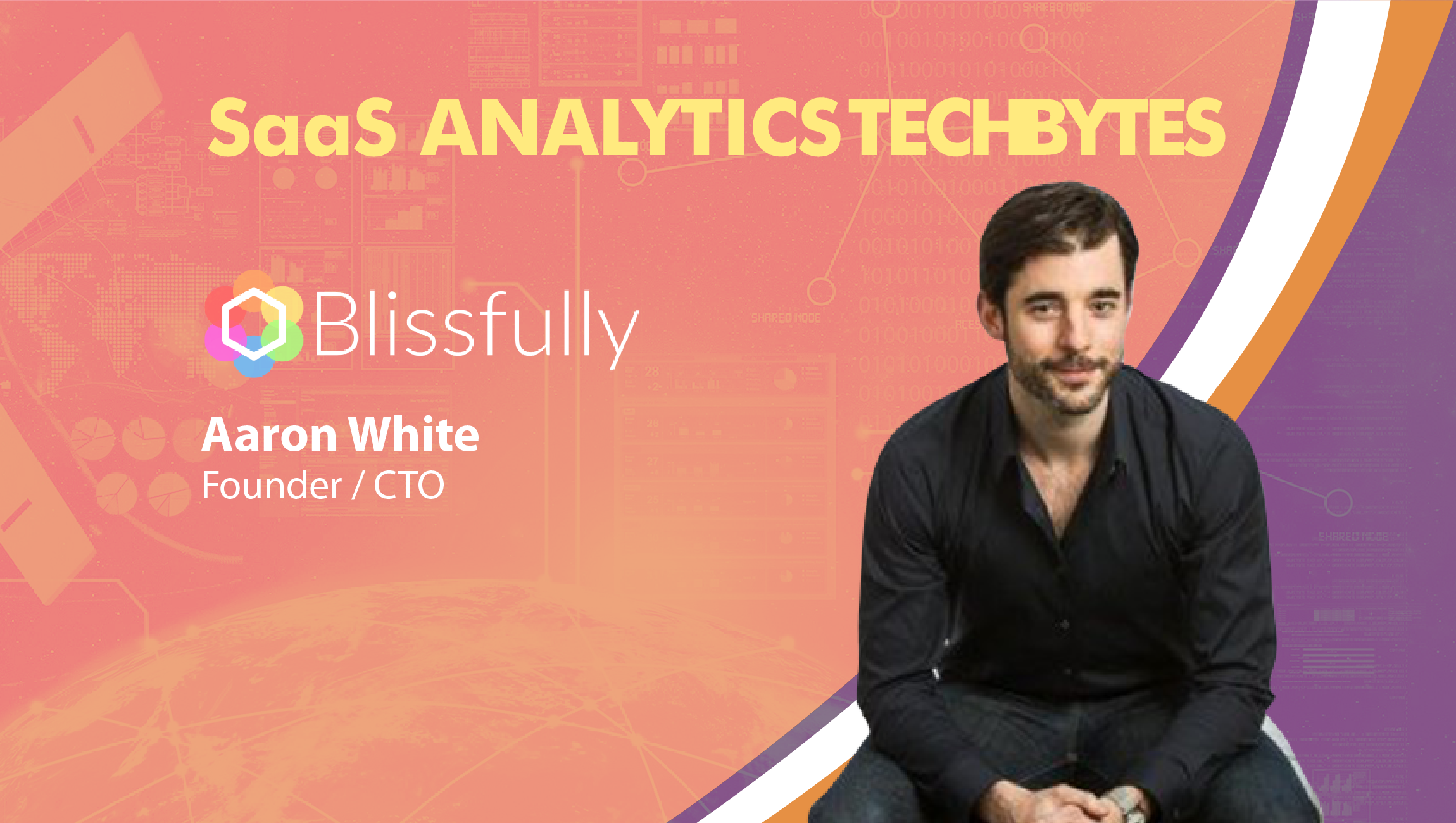Aaron White
Founder & CTO – Blissfully
According to a report, an average SMB pays for 20+ SaaS subscriptions and uses 30+ free SaaS products. These numbers are expected to double annually. What is most surprising is the origin of a concept, in 2017, called “Dark SaaS”. For a modern CMO, it is imperative to instantly identify and track all the SaaS products for improved security and to optimize spending on subscriptions and security. To understand how Blissfully helps manage your SaaS subscriptions, we spoke to Aaron White, Founder and CTO at Blissfully.
Html code here! Replace this with any non empty text and that's it.
Tell us the about idea behind conceiving a SaaS management company and the journey in seeing it become successful.
My co-founder, Ariel, & I have been directly building, or helping others build technology companies for years. Being cutting edge means getting an advantage from new technology and tools, before they become the norm. Conversely, it means experiencing the problems of tomorrow, today, and before the world has a known solution for them. We’ve enjoyed the gains from our own adoption of SaaS enormously, and experienced the unique pains as well: short-lived understanding of who-owns-what, ill-defined method of granting and revoking access, losing track of what is actually critical vs what we are paying for out of momentum, etc. We knew we could make the lives of others like ourselves a little bit easier, and so we built Blissfully.com to address the complications brought by increasing adoption of cloud products by employees throughout the org.
How does Blissfully collect data on SaaS products and report security risks to customers?
Blissfully triangulates SaaS ownership & usage through a variety of data sources. We have a G Suite Marketplace app that allows to aggregate invoices, receipts, and use-to-app authentications, direct integrations with financial systems, and finally direct integration to SaaS apps – all in service of providing & refining our level of understanding of adoption, expense, and usage through your company. We take all this disparate data, reconcile it a cohesive presentation, and then we run continual, automated analysis to generate insights & recommendations, which we then push to our users. So once we’ve begun monitoring your company, you don’t have to do much. We do the heavy lifting and report back to you when there are opportunities to improve, or risky issues that need to be addressed.
Would you explain – Dark SaaS – Shadow IT
“Shadow IT” is a scary term highlighting the unknown software a business has adopted but hasn’t told IT about.Is the vendor reputable? Does it violate internal IT policy? Does it compete with existing tools? Not knowing what software your people are using doesn’t make risk go away, it just means you’re unaware of it.
Dark SaaS on the contrary, is software is known to & approved by the organization, and is paid for monthly, but no one is actually using – sometimes because ops/finance isn’t aware that the use-case has sunset, or in more egregious cases, because the billing owner isn’t even at the company anymore, and no one migrated the admins!
In both cases, this is really a symptom of not having a complete picture of your company’s SaaS inventory, which itself is a function of the fact that it’s hard to keep all this data up to date, especially when adoption is happening up, down, and across the employee base.
What are the SaaS disruptions you see coming in 2018? How much of the landscape would move to cloud and automation?
The trends toward cloud & SaaS have now been playing out for over a decade, and while I’d love to assert this was now the norm, the majority of company’s aren’t yet “cloud first” with all of their tooling & vendors. Even among those that are, we’ve been seeing a doubling year-over-year of product adoption. This is far from fully played out!
It’s harder, of course, to predict disruptions along the way. On the one hand, there’s some SaaS fatigue – there are just so many tools, and this makes it harder for new entrants to find their users; old channels don’t work.
And, this is a shame because new players create new, tailored experiences for their slice of the market and yet fail to build a sustainable business if they can’t reach that audience. So there’s a tension between the cathedral and the bazaar. I think long term the economics favor the bazaar, it’d be interesting to see what opens up better matching between app makers and users.
How do you deploy machine-level intelligence to diversify your SaaS enlightenment solutions into the applications market?
I’m really excited for the kind of insights we’ll be able to generate for our users from our aggregate data set. At the moment, we haven’t deployed much machine intelligence. There’s a fascination with the latest algorithms (we feel the siren’s call daily!) … but we try to focus on what makes our users lives a bit easier. There’s plenty of low hanging fruit we produce just by shining a light on the software a company actually uses.
Still, even this requires significant technical expertise; we’ve architected our back end to provide essentially real-time results to new users. Create an account, and 60 seconds later, we provide answers & insights. That’s no small feat and lays a groundwork for the kind of greater value we’ll deliver over time.
Thanks for chatting with us, Aaron.
Stay tuned for more insights on marketing technologies. To participate in our Tech Bytes program, email us at news@martechseries-67ee47.ingress-bonde.easywp.com











